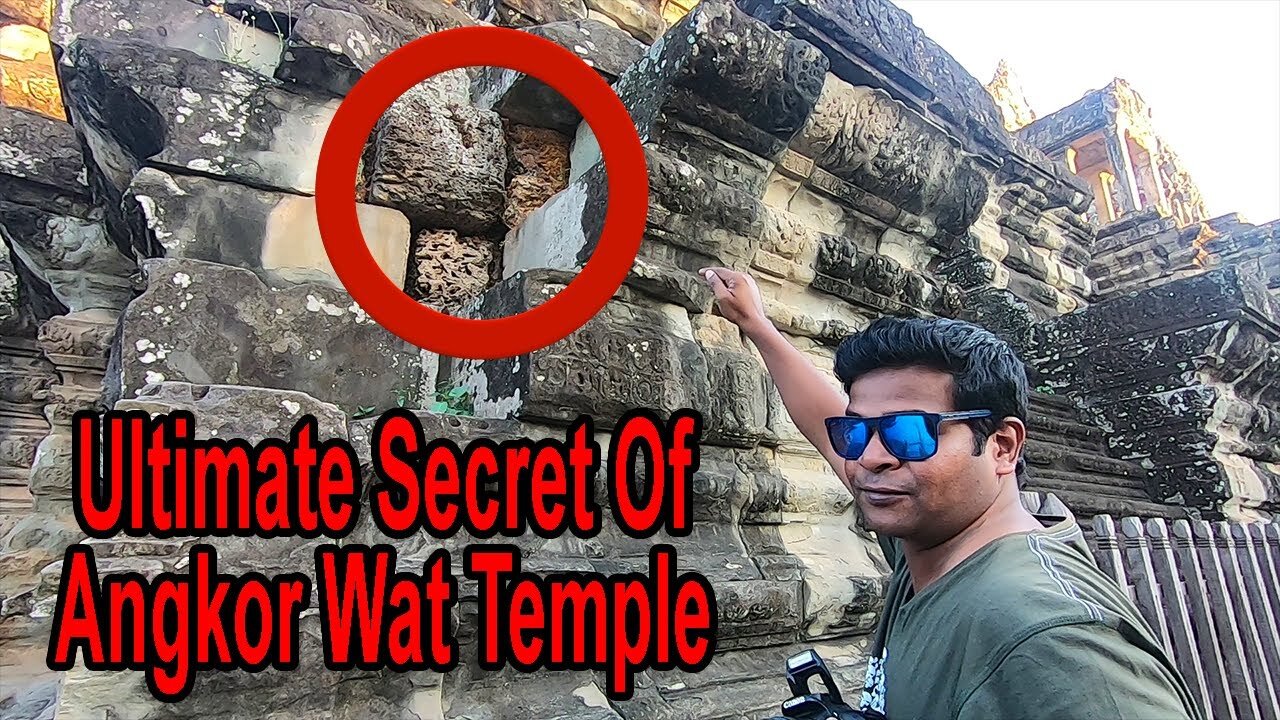Premium Only Content

This is Inside The Stone Blocks of Angkor Wat? Ancient Engineering Technology |Part 7| Praveen Mohan
𝗪𝗲 𝗻𝗲𝗲𝗱 𝘆𝗼𝘂𝗿 𝘀𝘂𝗽𝗽𝗼𝗿𝘁:
If you feel this work is important to be done in the current times, please help us out in producing more such content.
► PayPal :- https://paypal.me/hindutvawadi
★ Instagram :- https://instagram.com/praveenET
★ Twitter :- https://twitter.com/IamPraveenMohan
★ Email id :- phenomenaltravelvideos@gmail.com
00:00 - Introduction
00:19 - Sandstone Blocks
01:44 - Lava Rocks
02:51 - Giant Compound Wall
04:32 - Mystery Continues
05:44 - Lava Rocks behind Sandstone blocks
08:13 - Laterite Quarry
10:44 - Secret Ingredient
12:38 - Conclusion
Hey guys, today we are going to solve the puzzle of Angkor Wat's Stone Work. In a previous video, I had estimated that Angkor Wat would have needed at least 10 Million tons of sandstone blocks to build the temple. As you can see, Angkor Wat is entirely made of sandstone, and it is so big that it would have needed at least that many rocks. But there is a fundamental problem with this, if you look at the quarry sites of Angkor Wat, we can be sure that 10,000,000 tons of rocks were not removed from here. And experts confirm there are no other sandstone quarries nearby from which the rocks have been taken. So where did ancient builders magically get these sandstone blocks from? If you watch till the end of the video, you will know.
"So that is where the tourists are, that is where the main temple is. This is almost the edge of the temple but this is where all information is. See this is sandstone, this is this rock basically. You can see the blocks that were used to make this temple. I don't think these were leftovers. These are parts taken out and put here. So you can see these blocks of sandstone - this is what the entire temple is made of. These are the sandstone blocks that made the temple and you can see a bunch of them here and there is a pile of blocks which goes all the way and this is all sandstone. These are sandstone blocks, parts of pillars, I can tell right away, some make up the other structures. But you see those rocks there, that is where it gets really interesting. Can you see the difference between that rock and this rock? This rock is sandstone but that is not sandstone. I think that is volcanic basalt, that's - Cambodians call this Lava Rock, you see how porous it is. Let us go take a look and see how this was used. See how these rocks are, right? You can tell right away that you cannot put these rocks as front pieces of a temple right? Because you see how porous they are and how rough they are. If they are carved, this is not going to look good. But why do you see these huge rectangular blocks right? You can see how many blocks here right? This entire area is full of these "Lava Rocks". But these rocks were also used in the construction of the temple. Nobody understands this, people think it is made of sandstone but these rocks were key to the construction of the Angkor Wat temple. So let's go take a look and see where these were used. "
We are on the other edge of the temple, you can see tourists and tour guides walking into the temple, but remember, the information is always in places where people do not look. So I start exploring the woods nearby, normal people do not venture into this area.
And you can see something very exciting, the Angkor Wat temple is not only protected by a moat, but it has a giant compound wall, not only now, even a thousand years ago, most people would not visit this area, but this giant temple is protected by a 16 foot wall on all 4 sides. But the most important feature is the material used here.
"So this where the lava rocks were used. There is no need for dressing this up, there is no need for this compound wall to look beautiful, it was created for protective purposes, and this is why we have blocks and blocks of lava rocks. You can tell - it is not beautiful, but it will absolutely serve the purpose. And we are able to find this only if we go deep, where there is nobody. "
This material is called basaltic laterite, and it is created as a result of volcanic eruption. I examine this wall which stretches for miles, and when I start returning back to the main premises, something hits me, this wall made of laterite does not solve the mystery of Angkor Wat's volume of rocks. This wall probably accounts for 1 percent of Angkor Wat's stone blocks. So, just because I found out that this 1% is made of laterite, it does not explain where 99% of the rocks, the sandstone blocks came from.
#Ancienttechnology #AngkorWat #PraveenMohan
-
 3:36:03
3:36:03
Mally_Mouse
1 day ago🌶️ 🥵Spicy BITE Saturday!! 🥵🌶️- Let's Play: Tower Unite!
57.1K2 -
 58:59
58:59
MattMorseTV
10 hours ago $1.61 earned🔴Trump just BROKE Newsom.🔴
73.1K85 -
 18:14
18:14
Her Patriot Voice
10 hours agoWho Is WORSE for NYC: Trump Girl or Socialist?
55K34 -
 3:39:42
3:39:42
SavageJayGatsby
9 hours agoSpicy Saturday with Mally! | Road to 100 | $300 Weekly Goal for Spicy Bites!
51.7K1 -
 3:35:50
3:35:50
FomoTV
11 hours ago🚨 Swamp Theater: FBI Raids Bolton 🕵 Still NO Epstein Files, Trump's Troops & the Red Heifer Hoax 🐂 | Fomocast 08.23.25
23.9K7 -
 6:04:40
6:04:40
Akademiks
14 hours agoRoc Nation & Meg Thee Stallion did a 7 HOUR Deposition with me. Drake Secret Kid Finally Revealed.
60K3 -
 24:19
24:19
Stephen Gardner
10 hours ago🚨BREAKING: FBI Raid of John Bolton’s House Reveals THIS!
62.1K146 -
 8:31
8:31
MattMorseTV
12 hours ago $1.22 earnedTexas just did the IMPOSSIBLE.
52K69 -
 24:39
24:39
MYLUNCHBREAK CHANNEL PAGE
1 day agoInterdimensional Beings at Borobudur
59.6K36 -
 12:42
12:42
Scammer Payback
1 day agoCalling Scammers who were Raided
28.5K11